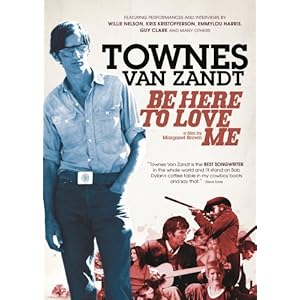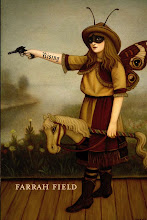Sunday, May 23, 2010
Wednesday, May 19, 2010
Syllabus: This Is How It All Went Down: Documentaries
Films:
Let's Get Lost, directed by Bruce Weber
The Untold Story of Louis Emmet Till, directed by Keith Beauchamp
The Business of Being Born, directed by Abby Epstein
Grey Gardens, directed by Albert & David Maysles & Ellen Hovde
Be Here to Love Me, directed by Margaret Brown
The Up Series: 21, 28, and Michael Apted's director's commentary for 35
The Fog of War: Eleven Lessons from the Life of Robert S. MacNamara, directed by Errol Morris
4 Little Girls and When the Levees Broke: A Requiem in Four Acts, directed by Spike Lee
To Be and to Have, directed by Nicolas Philibert
Our Daily Bread, directed by Nikolaus Geyrhalter
Harlan County USA, directed by Barbara Kopple
Grizzly Man, directed by Werner Herzog
New York: A Documentary Film, directed by Ric Burns
Sicko and Capitalism: A Love Story, directed by Michael Moore
Born Into Brothels: Calcutta's Red Light Kids, directed by Zana Briski & Ross Kauffman
The Civil War, first disc, directed by Ken Burns
Enron: The Smartest Guys in the Room, directed by Alex Gibney
American Blackout, directed by Ian Inaba
Monumental: David Browers' Fight for Wild America, directed by Kelly Duane
In the Realms of the Unreal, directed by Jessica Yu
Field Trip:
IMAX! The Endurance: Shackleton's Legendary Antarctic Expedition, directed by George Butler
Course Objectives:
Is a documentary truth or is truth truth. What is a documentary supposed to do. What about the living. Who's lens is this anyway. Documentary v. biopic: discuss. Say what you want to about politics, but you can't deny the footage in American Blackout. Do you feel lied to by the media yet. How come most documentaries about women are about porn stars. Sorry this list is so America-centric. How to present a controversial subject or person. Perpetuating myths: telling someone's life from all sides. What does it mean to tell the story from all sides. Getting in there deep: why Let's Get Lost sets the standard. How to get people talking. Can you publish everything they say. If given the chance, what would you make a documentary about. What do you do when you uncover something mid-film, change course. What did every documentary begin with, as. You can do all the extra credit you want.
Monday, May 17, 2010
Yeah, I'll Be Right Here to Love You

About a week ago, the old man and I watched a documentary on one of my favorite folk singers, Townes Van Zandt. Be Here to Love Me: A Film About Townes Van Zandt really disappoints. I kinder wish I hadn't seen it because I found Van Zandt rather annoying and immature. It's such a strange thing when a beautiful songwriter is anything but that. A tag line for the film reads: what would you sacrifice to follow your dream? I didn't see him sacrifice anything: all his various women raised his various children while he was out a-singin' and a-ramblin'. It seemed as though his only dream was to have someone waiting at home for him while he was on the road. The film mentions only once Van Zandt's heroin addiction. Toward the end of the film and of his life, various figures talked about how his alcoholism affected his performances, but none of them went into great detail, saying that he got a little talky on stage toward the end.
As the movie went on, I got to thinkin' about Emmylou Harris. When she first started out, she was only one of a handful of women folk singers. I thought it was interesting how she's been in so many bands and sang back-up for men like Townes Van Zandt. I wondered what that was like, if she's more like them, more like their wives, or something else entirely. So, what is she really allowed to say about them? And what does it say about her? Gram Parsons and Townes Van Zandt have a whole lot of addiction in common. (As an aside, Harris actually credits Linda Ronstadt for being the driving force that led to Harris' first recording contract). The old man and I talked about Harris at great length after watching the film and talked about other artists and writers who were burning down their lives while their children were being raised by someone else. One of the only women, we could think of, who left her children while in pursuit of her own interests is Muriel Spark.
Townes Van Zandt was one of those characters who makes you think about whether you're stricken with life or stricken with death--so afraid to live that you destroy yourself until you die. Looking down the smoky path he burned, I wonder of what it was Townes Van Zandt was so afraid.
Friday, May 14, 2010
That Is So Cape Cod!

That is so Cape Cod! Annoyed teenagers listening to their ipods! That fence! Those salty houses! Shorts worn with sweaters! Hey Paul, Hey Charlie. Shorts worn with a tank top under a t-shirt under a long sleeve shirt under a button down under a blazer! That is so J. Crew! Sand flies. Suddenly everything is open! Lobster mac 'n cheese! I can ride my bike to work! Who's living above me! Why won't anyone talk to me! I can't feel my feet or face! It's turned out to be sunny day!
Wednesday, May 12, 2010
Flow Out of My Chart
Now that I've been hidden away in Provincetown, I can tell you what I've been meaning to tell you. I've been making poster-sized flow charts on poser board leftover from my teaching days. When you make a flow chart, you can think about three things at once, like being able to eat, read, and write at the same time. (Did you try to do that when you were younger?)
A friend of mine asked me to write an essay for his journal and I was super nervous because I'd never done that before. I wanted to write about gurlesque poetry, but instead chose the topic, On Being Gross. When my friend asked me how the essay was coming along, this is what I sent. He inevitably asked me to write on someone else, which is good because I think the flow chart basically became the essay.
I've done two more since then, one on the folk singer Laura Marling (for Poets off Poetry) and one on my family. I love drawing the lines to connect the boxes, getting my pen stuck in a tight spot. In the first and last charts, all the major thinking, all the deductions are on the outer rim of the chart, but I mixed it up with the Laura Marling chart and the arrived-to thinking forms a sort of labyrinth on the chart. It's fun trying to find the end of the line.
The "getting to" thinking is sort of the main point, seeing how far I can come away or how much thinking I can do about a subject until I can't think on it anymore. For example, in the gross chart I was making notes about the differences between men being gross versus women, thinking about artistic situations besides poetry that highlight this, finally contrasting Samurai films with Buffy. During the chart about my family, I began to think about anxiety and whether or not anxiety is something that is a result of having goals.
I have some wall space in my apartment that I'd love to cover with butcher paper and just go to town. The space is by the bath tub, so holy shit if I do that, I'd be reading, writing, thinking, and taking a bath at the same time...
Thursday, May 6, 2010
Fantasy Feature No. 66
You finished. Something in you went away. You put the last segment of Bolano's 2666 back in its box and together, all three spines created the big red title, 2666. Bolano is the smartest person in the world and you held his writing in your hands. You didn't say anything. The old man was wearing headphones and watching something on his computer. You walked across the room and blew your nose. You're supposed to read books to be done with them and move onto the next one, right? You feel as though someone were sticking an arm through the triangle your arm makes while resting on your hip. A handful of almonds. Suddenly the old man stood up. "Did you finish?" Yeah, it's done.
Tuesday, May 4, 2010
Subscribe to:
Posts (Atom)






